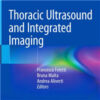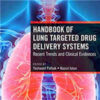How I Perform Diaphragmatic Ultrasound in the ICU
link.springer.comThe diaphragm is a thin, dome-shaped muscle, comprising a costal and crural part, and a non-contracting central tendon. Muscle fiber activation shortens and thickens the diaphragm in the zone of apposition, moving the dome caudally.
Diaphragm function, defined as the ability to contract and generate pressure, has substantial reserve capacity.
However, clinically significant diaphragm weakness, a marked reduction in its force-generating ability, is an uncommon reason of respiratory failure causing admission to the intensive care unit (ICU).
It more commonly develops in critically ill patients, even early during their ICU stay. The pathophysiology hereof remains incompletely understood, with disuse and inflammation recognized as key risk factors.
Critical illness-associated diaphragm weakness may complicate weaning and worsen outcomes. Therefore, in specific clinical settings, evaluation of diaphragm function in the ICU is important.
Ultrasound allows to noninvasively visualize the diaphragm function and activity at the bedside. In this article, we present our clinical experience with diaphragm ultrasound in daily care.

















